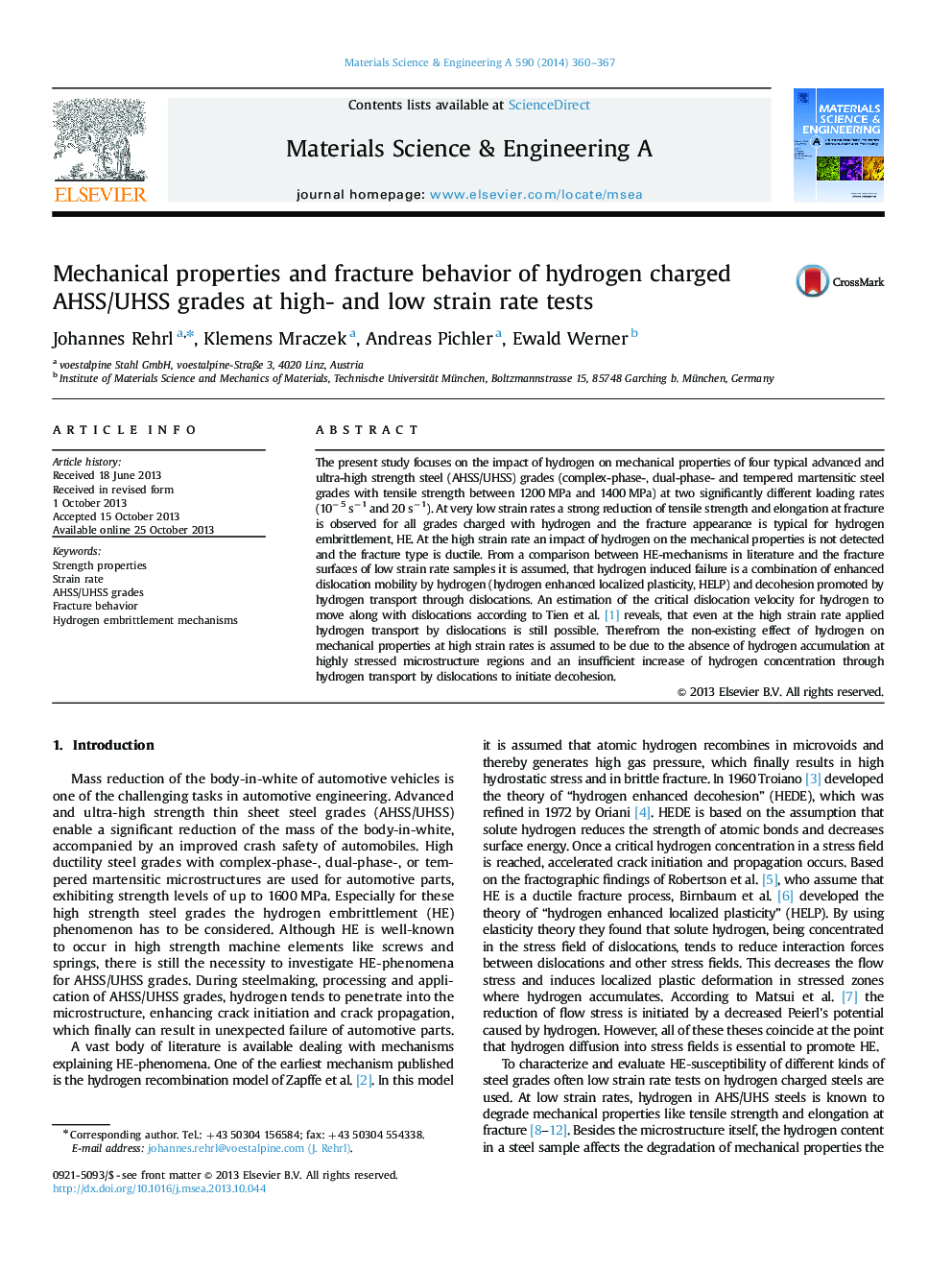| Article ID | Journal | Published Year | Pages | File Type |
|---|---|---|---|---|
| 7981977 | Materials Science and Engineering: A | 2014 | 8 Pages |
Abstract
The present study focuses on the impact of hydrogen on mechanical properties of four typical advanced and ultra-high strength steel (AHSS/UHSS) grades (complex-phase-, dual-phase- and tempered martensitic steel grades with tensile strength between 1200Â MPa and 1400Â MPa) at two significantly different loading rates (10â5Â sâ1 and 20Â sâ1). At very low strain rates a strong reduction of tensile strength and elongation at fracture is observed for all grades charged with hydrogen and the fracture appearance is typical for hydrogen embrittlement, HE. At the high strain rate an impact of hydrogen on the mechanical properties is not detected and the fracture type is ductile. From a comparison between HE-mechanisms in literature and the fracture surfaces of low strain rate samples it is assumed, that hydrogen induced failure is a combination of enhanced dislocation mobility by hydrogen (hydrogen enhanced localized plasticity, HELP) and decohesion promoted by hydrogen transport through dislocations. An estimation of the critical dislocation velocity for hydrogen to move along with dislocations according to Tien et al. [1] reveals, that even at the high strain rate applied hydrogen transport by dislocations is still possible. Therefrom the non-existing effect of hydrogen on mechanical properties at high strain rates is assumed to be due to the absence of hydrogen accumulation at highly stressed microstructure regions and an insufficient increase of hydrogen concentration through hydrogen transport by dislocations to initiate decohesion.
Related Topics
Physical Sciences and Engineering
Materials Science
Materials Science (General)
Authors
Johannes Rehrl, Klemens Mraczek, Andreas Pichler, Ewald Werner,
